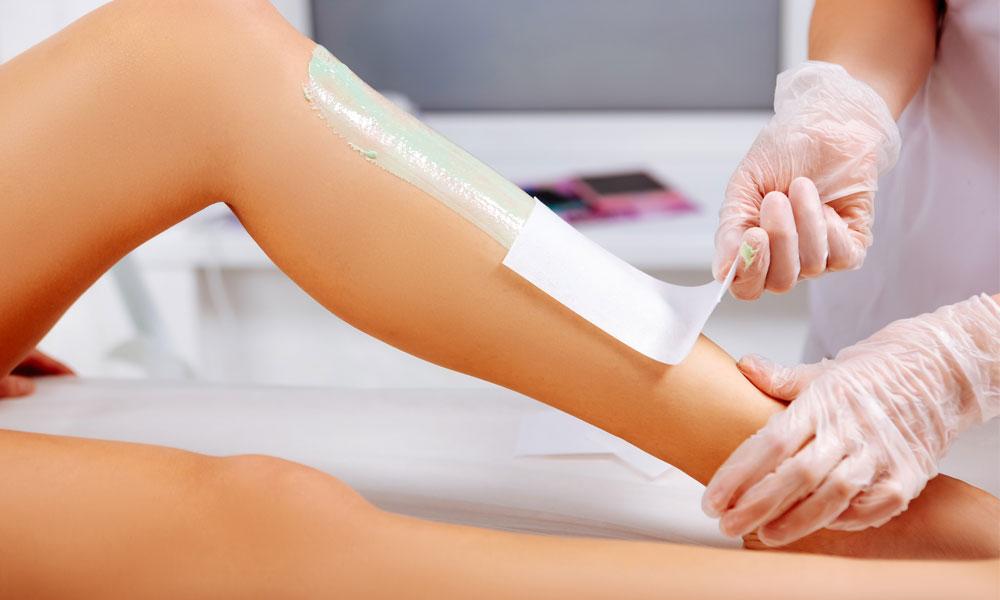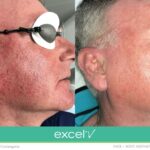Embrace Your Beauty Safely: Waxing for African Americans
In a world that often holds narrow standards of beauty, celebrating our unique characteristics is a powerful act of self-love and affirmation. For African Americans, skincare and grooming practices hold cultural significance that goes beyond aesthetics, serving as a means of honoring our heritage and embracing our natural beauty. One such practice is waxing—a hair removal method that has gained popularity for its long-lasting results and smooth finish. However, like any skincare treatment, waxing for African American skin requires special consideration to ensure safety and effectiveness. In this article, we will explore how you can embrace waxing while safeguarding your radiant skin, offering practical tips and expert advice to elevate your beauty routine. Join us on this journey to discover how waxing can become a positive and empowering part of your self-care regimen, helping you to shine confidently and safely in your glorious skin.
Table of Contents
- Understanding Your Skin: The Unique Qualities of African American Skin
- Choosing the Right Wax: Products That Cater to Your Needs
- Pre-Waxing Tips: Preparing Your Skin for the Best Results
- Safe Waxing Techniques: Avoiding Common Pitfalls and Irritations
- Post-Waxing Care: Maintaining Smooth Skin and Reducing Bumps
- Q&A
- Insights and Conclusions
Understanding Your Skin: The Unique Qualities of African American Skin
When caring for your skin, it’s essential to recognize the unique characteristics that make African American skin special. The higher levels of melanin not only give a radiant natural glow but also offer some protection against UV radiation. However, melanin-rich skin also has its own set of challenges, such as a propensity for hyperpigmentation and increased susceptibility to certain types of irritations. Understanding these differences can help you adopt better waxing practices that celebrate your beauty while keeping your skin healthy and safe.
African American skin tends to be more prone to keloids and ingrown hairs. These conditions can be exacerbated by improper waxing techniques or using products that are not formulated for your skin type. To combat these issues, focus on the following key steps:
- Exfoliate regularly to reduce ingrown hairs and keep your skin smooth.
- Use calming agents such as aloe vera or chamomile post-waxing to soothe irritation and redness.
- Avoid fragrances and harsh chemicals in your waxing products to prevent skin reactions.
Hydration and nourishment are crucial for maintaining the lustrous quality of African American skin. Post-waxing care should include the application of moisturizers enriched with natural oils like shea butter and coconut oil. These not only enhance your skin’s moisture barrier but also provide essential vitamins and nutrients that promote skin repair and renewal.
Here’s a quick guide to the best natural ingredients for post-waxing care:
| Ingredient | Benefits |
|---|---|
| Shea Butter | Deep hydration and anti-inflammatory properties |
| Coconut Oil | Skin barrier protection and anti-microbial benefits |
| Aloe Vera | Soothing and cooling effects |
| Vitamin E Oil | Powerful antioxidant and skin repair |

Choosing the Right Wax: Products That Cater to Your Needs
Finding the perfect wax is a crucial step in ensuring a comfortable and effective hair removal experience, especially for African American skin, which can be prone to hyperpigmentation and ingrown hairs. It’s essential to select a product that not only removes hair efficiently but also nurtures the skin. Here are some considerations:
- Natural Ingredients: Look for waxes that incorporate soothing natural ingredients like chamomile, aloe vera, and tea tree oil. These components are known for their anti-inflammatory properties and can help reduce irritation and redness.
- Hypoallergenic Formulas: African American skin can be sensitive; using a hypoallergenic wax can minimize the risk of allergic reactions, ensuring a safer waxing session.
- Gentle Formulations: Hard waxes are often recommended as they adhere mainly to the hair and less to the skin, making the removal process less painful and reducing the likelihood of skin damage.
Brands catering to diverse skin types are increasingly common. Below is a concise table that highlights some of the top-rated waxes suitable for African American skin:
| Brand | Key Features |
|---|---|
| Nacach Professional | Natural ingredients, Suitable for coarse hair |
| European Wax Center | Hypoallergenic, Available in various scents |
| GiGi Brazilian Body Hard Wax | Hard wax, Soothes and hydrates skin |
| Parissa Organic | Eco-friendly, Gentle on skin |
Besides the product itself, the pre- and post-waxing care you adopt also plays a pivotal role in maintaining healthy skin. Always exfoliate gently before waxing to prevent ingrown hairs and moisturize after to soothe the skin. Opt for non-comedogenic and fragrance-free lotions that provide hydration without clogging pores.
Embrace waxing as a way to celebrate your beauty. The right products allow you to feel confident in your skin without fear of irritation or damage. Remember, the journey to smooth skin is not just about removing hair, but also about nourishing and respecting your unique skin type.
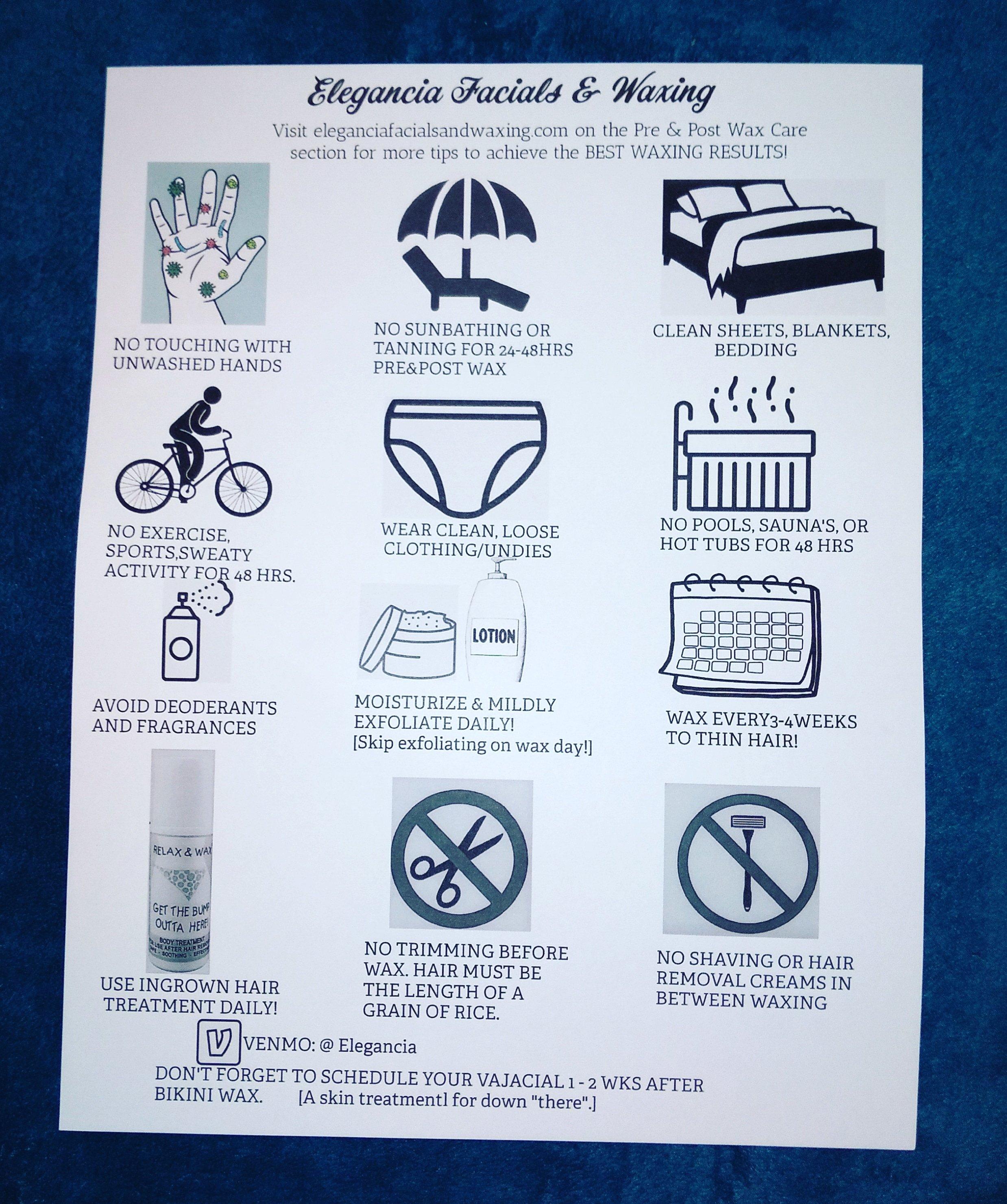
Pre-Waxing Tips: Preparing Your Skin for the Best Results
Achieving the best results from your waxing session begins long before you step into the salon. Taking care of your skin ahead of time can make a significant difference. To start, **exfoliation** is key. Removing dead skin cells not only helps to reveal smoother skin, but it also ensures that the wax grips the hairs more effectively. Aim to exfoliate one to two days before your appointment using a gentle scrub. Avoid harsh products or devices that may irritate your skin.
Another critical step is **hydration**. Well-moisturized skin is more elastic and resilient, making it less prone to irritation and easier to wax. Drink plenty of water in the days leading up to your appointment and consider using a lightweight, non-greasy moisturizer. However, on the day of your waxing, skip the lotion and oils; clean, dry skin ensures the wax adheres properly.
Preparing your skin also means knowing when to avoid certain activities. Refrain from tanning, whether through sunbathing or artificial means, for at least 24 hours before and after your session. Tanning can make your skin more sensitive and prone to adverse reactions. Similarly, avoid hot showers, saunas, or steam rooms before your appointment as they can open up pores and make waxing more uncomfortable and less effective.
Lastly, check your **hair length**. For optimal waxing, your hair should be about a quarter-inch long, roughly the size of a grain of rice. This length ensures the wax can grip the hair for efficient removal. If your hair is too short, the wax may not be able to catch it; too long, and the process can be more painful. If you need guidance, don’t hesitate to consult your esthetician.
| Do’s | Don’ts |
|---|---|
| Exfoliate gently | Tanning |
| Stay hydrated | Hot showers before waxing |
| Check hair length | Use moisturizers on the day |
| Consult your esthetician | Wax on irritated skin |
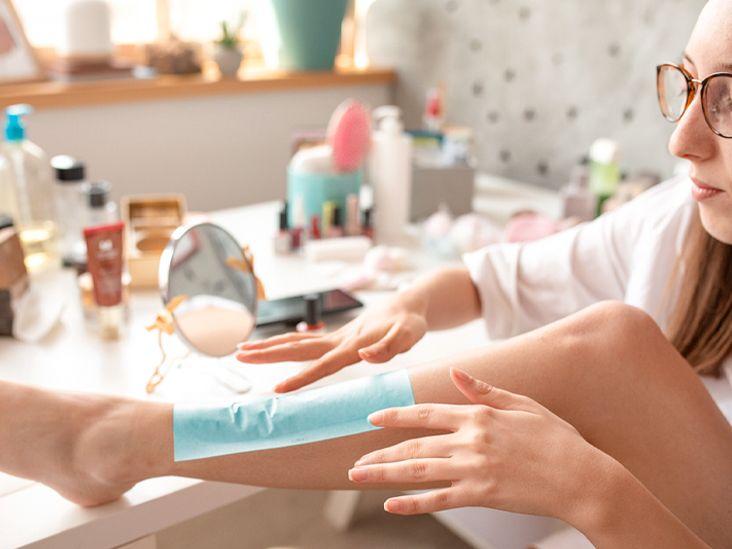
Safe Waxing Techniques: Avoiding Common Pitfalls and Irritations
When it comes to waxing, understanding your unique skin type is crucial for a safe and effective experience. African American skin can be particularly sensitive, leading to potential issues like hyperpigmentation and ingrown hairs. Gently exfoliating the skin before waxing can help to remove dead skin cells and prevent these problems. Exfoliation aids in opening up the pores, allowing the wax to adhere better to your hair rather than the skin, thereby reducing irritation and discomfort.
- Hydrate Your Skin: Well-moisturized skin is less likely to suffer from post-wax irritation. Use a gentle, fragrance-free lotion to ensure your skin stays hydrated without causing further sensitivity.
- Avoid Retinoids: Retinoid creams can make your skin more prone to sensitivity and tearing. Discontinue their use at least a week before your waxing appointment.
- Test a Small Area First: Always perform a patch test, especially if you’re using a new type of wax or a new salon. This step can help mitigate adverse reactions before they become full-blown issues.
| Tip | Details |
|---|---|
| Avoid Sun Exposure | Sunburned or tanned skin can be extra sensitive. Schedule your waxing session when your skin hasn’t been recently exposed to the sun. |
| Choose the Right Wax | Soft wax is gentle and excellent for large areas, while hard wax works wonders for coarse or stubborn hair and is less likely to stick to the skin. |
Post-wax care is equally important in maintaining the health of your skin. After waxing, your skin might be more susceptible to infections and irritations. Incorporate soothing treatments such as aloe vera gel or tea tree oil to calm any redness. Avoid tight clothing immediately after waxing to prevent chafing, and steer clear of activities that cause excessive sweating. By treating your skin with care both before and after the waxing process, you can embrace your natural beauty with confidence and comfort.
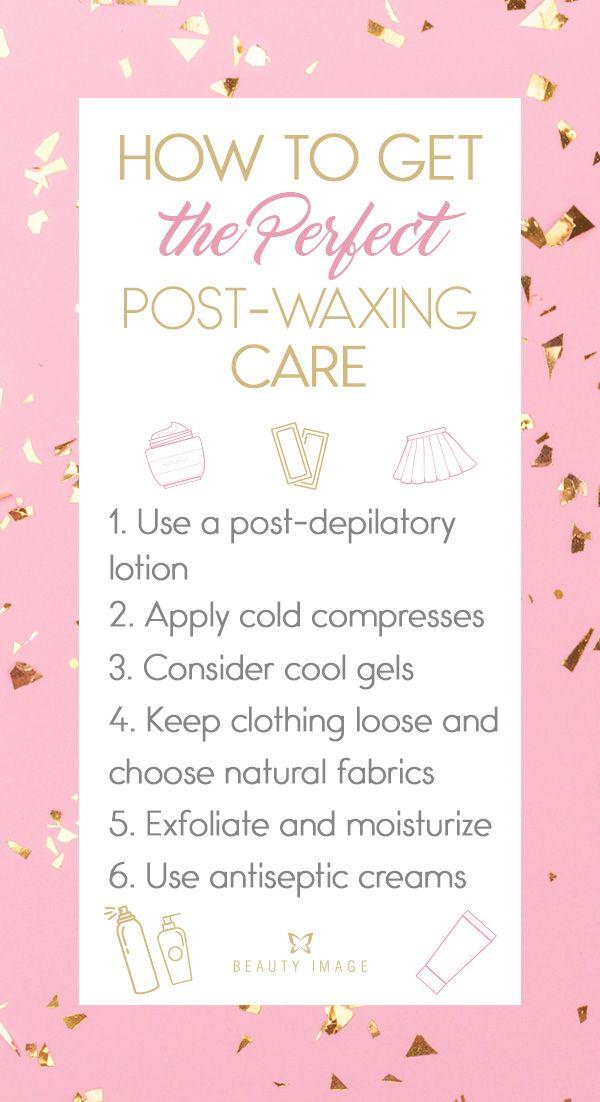
Post-Waxing Care: Maintaining Smooth Skin and Reducing Bumps
Maintaining smooth, radiant skin post-waxing is essential to embrace your beauty safely. It all begins with proper aftercare to minimize irritation and prevent the formation of those pesky bumps. Start by gently cleansing the waxed area with a mild, fragrance-free soap to remove any residual wax. Pat the skin dry with a soft towel; avoid rubbing, which can cause irritation. Hydration is key, so apply a **non-comedogenic moisturizer** to keep your skin supple.
- **Avoid Hot Showers:** Hot water can aggravate freshly waxed skin. Instead, opt for lukewarm showers, as they are less likely to cause inflammation.
- **Wear Loose Clothing:** Tight fabrics can chafe skin and trap sweat, promoting irritation and ingrown hairs. Choose loose, breathable clothing to allow your skin to breathe.
- **Say No to Sun Exposure:** Freshly waxed skin is more sensitive to UV rays. Apply a broad-spectrum sunscreen if you need to step outside, even on cloudy days.
Exfoliation is another crucial step in your aftercare routine. While you should avoid exfoliating immediately after waxing, wait 48 hours before gently exfoliating the area with a soft scrub or a chemical exfoliant containing **alpha hydroxy acids (AHAs)**. This helps to remove dead skin cells and prevent ingrown hairs, leaving your skin smooth and even-toned. Make sure to be gentle and not over-exfoliate, as this can cause more harm than good.
| Post-Waxing Tip | Benefit |
|---|---|
| Hydration | Keeps skin smooth and supple |
| Exfoliation | Prevents ingrown hairs |
| Loose Clothing | Reduces skin irritation |
Lastly, always listen to your skin. Every individual is unique, and what works for one may not work for another. If you experience prolonged redness, swelling, or discomfort, consider consulting a dermatologist. They can offer personalized advice and treatment to ensure your skin remains healthy and beautiful. Embracing your natural beauty is a journey, and with the right care, you can navigate it safely and gracefully.
Q&A
Q&A: Waxing for African Americans: Embrace Your Beauty Safely
Q: Why is waxing a popular choice for hair removal among African Americans?
A: Waxing is favored by many due to its ability to provide smoother skin for longer periods compared to shaving. African Americans, in particular, may find waxing beneficial as it reduces the occurrence of ingrown hairs and razor bumps, common issues associated with curly or coarse hair types.
Q: What are the unique considerations African Americans should be aware of when choosing waxing as a hair removal method?
A: It’s important to select products and techniques that cater to the specific needs of melanin-rich skin. This includes using waxes formulated for sensitive skin to prevent hyperpigmentation and seeking experienced professionals who understand how to handle various hair textures safely.
Q: How can one prepare their skin for waxing to ensure the best results?
A: Preparing the skin is crucial. Exfoliate gently a day or two before your appointment to remove dead skin cells and reduce the risk of ingrown hairs. Ensure the skin is clean and dry before waxing; avoid moisturizing on the day of, as oils and lotions can interfere with the wax’s adherence.
Q: What aftercare steps are essential post-waxing?
A: After waxing, soothe the skin with aloe vera or tea tree oil to reduce inflammation. Avoid tight clothing that may irritate the skin, and steer clear of activities that induce sweating, such as working out or sunbathing, for at least 24 hours. Keeping the area moisturized and continuing to gently exfoliate can help maintain smooth results and prevent ingrown hairs.
Q: Are there specific waxing products recommended for African American skin?
A: Look for hypoallergenic waxes and those infused with soothing ingredients like chamomile or calendula. Products labeled for sensitive skin are also a good choice. Brands that emphasize safe, natural ingredients tend to be less harsh on melanin-rich skin.
Q: How often should one wax to maintain smooth skin?
A: Typically, waxing every 4-6 weeks is recommended, but this can vary based on individual hair growth rates. Consistent waxing can lead to finer, sparser hair regrowth over time, making the process more effective and less painful with continued use.
Q: Can one wax at home, and what precautions should be taken?
A: Yes, home waxing is an option, but it’s essential to follow instructions carefully and use high-quality products. Patch test the wax on a small area to check for allergic reactions. Also, ensure you’re pulling the wax strip in the right direction to minimize the chance of skin trauma or ingrown hairs.
Q: What are the benefits of professional waxing services versus DIY waxing?
A: Professional waxing services come with the expertise of trained estheticians who can handle different skin types and hair textures safely. They can provide personalized advice and use professional-grade products that may not be readily available for home use, ensuring a more efficient and potentially less painful experience.
Q: What mental and emotional benefits can come from embracing waxing as a hair removal method?
A: Embracing waxing can enhance self-confidence and positively impact one’s perception of their body, leading to a more empowered and self-assured sense of beauty. By taking care of your skin and choosing methods that work best for you, it symbolizes a significant step toward self-love and embracing your unique beauty.
Q: What final advice do you have for African Americans considering waxing?
A: Educate yourself about the process, invest in quality products or professional services, and listen to your skin’s needs. Embrace your beauty confidently and safely, knowing that the right care can highlight the radiance and resilience of your skin. You deserve to feel comfortable and beautiful in your own body.
Insights and Conclusions
As we draw to a close on our exploration of waxing specifically tailored to African American skin, it’s paramount to remember that embracing your natural beauty should never come at the expense of your health and well-being. By arming yourself with the right knowledge and taking proactive measures, you can make informed choices that enhance your unique beauty safely and effectively.
From understanding the unique characteristics of African American skin to selecting the right waxing techniques and products, taking these steps ensures a smoother, more confident journey in your grooming routine. Consult with professionals who are well-versed in the specific needs of your skin type and never underestimate the power of patch tests and proper aftercare.
Every choice you make in your beauty regimen should be a celebration of your individuality and strength. So, step forward with confidence and embrace the beauty that is uniquely yours, knowing you are informed, empowered, and ready to shine.
Here’s to celebrating and safeguarding the beauty that defines you.




